In Recent years the Thoroughbred has been making a huge come back in the Leisure Riding Horse Industry. The TB has been part of Irish Sport and Horse Breeding for many generations, and is the horse of choice in the Sport of Eventing. Through the years Eventing would absorb many of those failed Ex Race Horses bringing them on to glittering careers in Eventing, but until relatively recently not too many were being retrained for other sports.
However this has changed massively over the past ten to fifteen years with many Ex Race Horses, going on to achieve success in new careers far removed from the speed of racing.
Irish Sport Horse Magazine caught up with 4 Lovely Ladies who through their Patience, Determination and Kindness, took 4 very Different Ex Race Horses to huge success in the Leisure Horse Industry, proving the versatility and trainability of this fantastic breed.
Good Grief & Ruth Wiseman
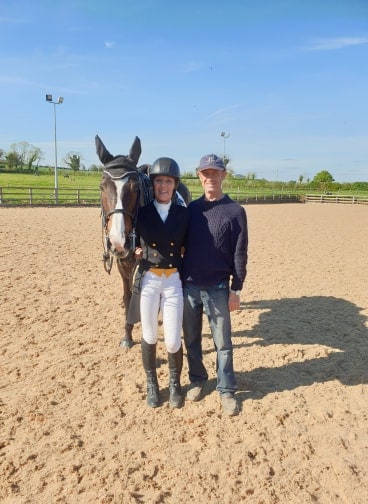
Hi Ruth,
Thank you for taking the time to talk to Irish Sport Horse Magazine, about your Fantastic Journey with Good Grief, who you have brought from Race Horse to Prix St. George Dressage Horse. Huge congratulations on your recent success. We just want to ask you a few questions about Good Grief’s (aka Little Man’s) journey from Race Horse to Dressage Horse.
Tell us a little bit about your horse’s racing career and what were his most notable achievements.
Good Grief raced 5 times. 3 times as a 2 year old and twice as a 4 year old. He just wasn’t fast enough finishing in the bottom few in the outings.
How did he come to be with you?
After his last race he was given to a friend of mine to sell. The proviso being that he went to a good home. She rang me to ask if I was interested. I really wasn’t at the time, as I was bringing on a young mare and competing my showjumper as well. I agreed to come and have a look at him and I immediately loved him. He was a tall elegant horse with a super walk and a lovely intelligent, kind eye, so I bought him on the spot.
What did he find was the biggest challenge in his transition from Race Horse to Riding Horse?
He actually settled really well. I had very few problems however I went right back to the beginning with him. I started long reining, lungeing, pole work etc.
I introduced everything slowly using riding club lessons to introduce him to other horses in a non racing environment. Cross country training was done with a quiet older horse. I went to lessons with Denis Flannelly and Patricia Creighton for the showumping training.
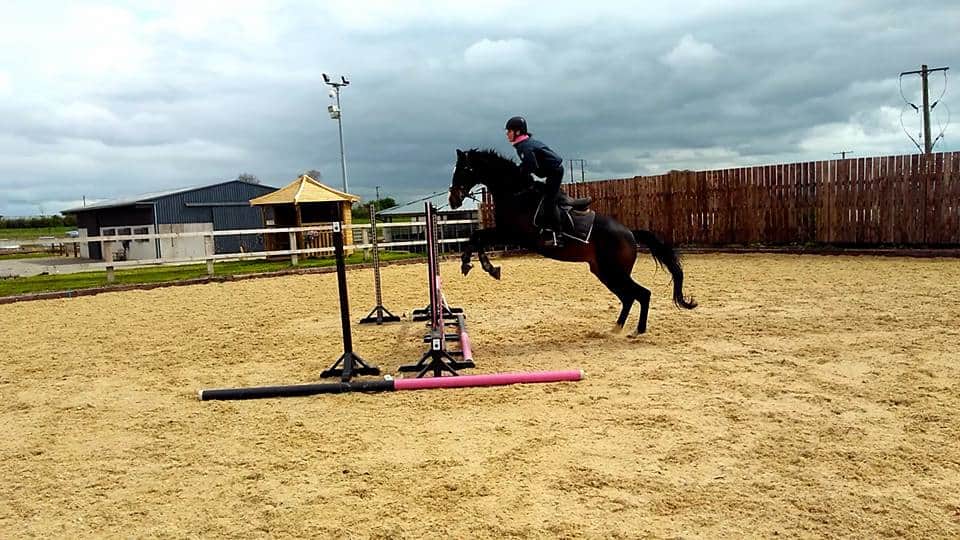
Are there any particular traits in his character/temperament that make him special?
Good Grief is Intelligent and quick to learn new skills. He is a real showman. When he goes into the ring he knows his job and he will very rarely let me down. He loves being with people and likes to be involved in all that’s going on.
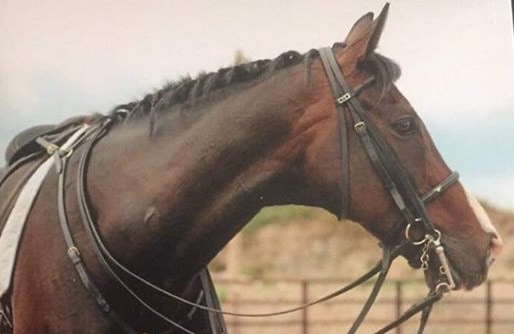
Did the retraining process take a long time?
It took 6 months from when I got him to his first competition. I decided to do Dressage as his first outing. Nice and relaxed for his first foray into competition. While I competed him from then on, it was years before he really strengthened up. As I result of this I never pushed him, I just took my time.
What have been some of the Highlights in his new Career so far?
Oh, there have been so many. He has won virtually every league we have done in Dressage from Prelim to Advanced in Dressage Ireland. He has achieved the maximum amount points available in Dressage Ireland!
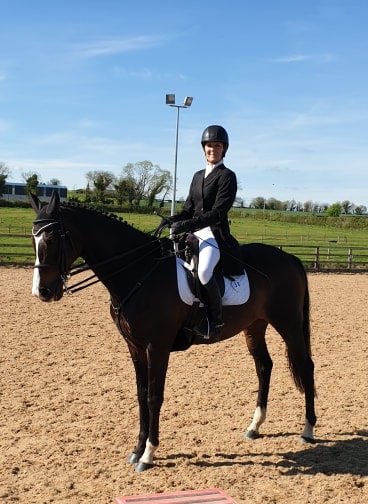
He also competed very successfully at Ex Racehorse to Riding horse classes.
Winning 8 combined training shows in as many weeks.
He was National Champion at the Festival of Ex Racehorses.
Reserve in ITM National Competition.
He Placed in the top two in Derby competitions.
His first Prix St Georges was a real highlight. The icing on the cake so far.
If you had one piece of advice to offer someone considering retraining n ex-racehorse to riding horse, what would that be? Take your time and have patience! Thoroughbreds are really quick to learn but you have to give time for muscle and strength to build. If you take the time you will be rewarded with a loyal, willing friend for life!
Numbersixvalverde & Rosario Kelly
Hi Rosario,
Thank you for taking the time to talk to Irish Sport Horse Magazine about your Journey with the amazing Numbersixvalverde. We know this horse had a glittering career racing, we want to ask you a few questions about his career racing and his transition to riding horse with yourself.
Tell us a little bit about your horse’s racing career and what were his most notable achievements?
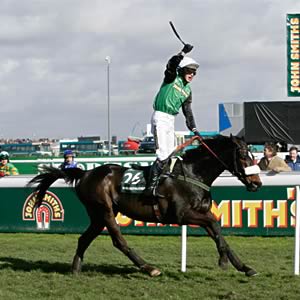
Numbersixvalverde was foaled in 1996 and is owned by Bernard Carroll and was trained by Martin Brassil.
He raced over both hurdles and fences but seemed to prefer the bigger obstacles. He won the Thyestes Chase – a Grade 1 Steeplechase. He also won the Irish Grand National in 2005 but is probably best known for winning the Aintree Grand National the following year in 2006.
How did he come to be with you?
Bernard is a friend and client – my husband Dermot trained several winners for him back in the day.
When Sixy (his stable name) retired he began to get a little bored out In the fields and Bernard thought Dressage might give him something to think about.
What did he find was the biggest challenge in his transition from Race Horse to Riding Horse?
I think realizing that he didn’t have to go everywhere at speed was the hardest for him! He was quite switched on at his first show but he got the hang of things pretty quickly and started to settle into his new life.
Are there any particular traits in his character/temperament that make him special?
He is incredibly tough and willing to learn. He loved going to shows and really puffed himself up at the yearly winner’s parade at Aintree! He isn’t very big and had some old injuries/issues but he came out giving 100% every day.
Did the retraining process take a long time?
It didn’t take very long with him as his temperament is good and he was interested enough to try his best.
He had been off the track for a while before he came to me, so he had time to wind down and adjust to life after racing. That was a big help. It might have been a different story if he had come straight off the track.
What have been some of the Highlights in his new Career so far?
It’s some time since he competed with me but he won a number of Prelim classes in affiliated Dressage competitions and competed in the National Winter Dessage Championships at Cavan Equestrian Centre in 2011.
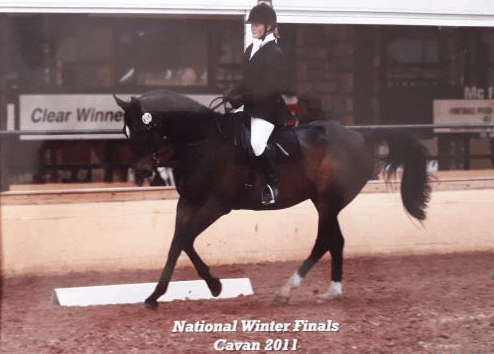
If you had one piece of advice to offer someone considering retraining an ex-racehorse to riding horse, what would that be?
Be patient! It’s a completely different world for them and they have to have time to adjust to being ridden with a longer leg, different aids, a different (heavier) saddle and to learn to slow everything down. Some time turned out to grass may help them mentally to switch off before you start re-training.
Certerach & Carol Spain
Hi Carol,
Thank you so much for taking the time to talk to us about your experience retraining Certerach for Riding Horse Classes. We know that he had a successful racing career, but we would love to find out a bit about his journey with you into his new career.
Tell us a little bit about your horse’s racing career and what were his most notable achievements.
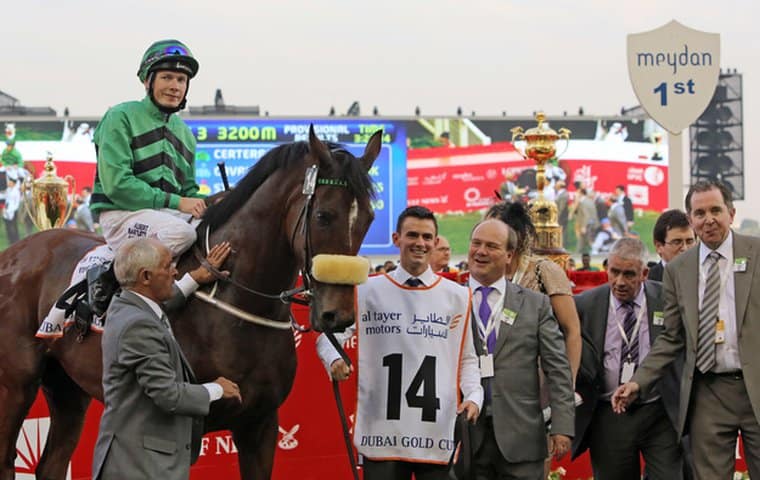
Certerach is a 16.3hh, 11 year old gelding by Hailing(USA) out of a Danehill mare. He was trained by Micheal Halford. He is flat horse that has had 4 wins and 8 placings out of 32 starts. Certerach’s biggest win was the Dubai Gold Cup in Meydan in 2014.
How did he come to be with you?
When I started working for Louise Halford, Michael’s wife, he was retired sound and had begun his new life as a riding horse.
Louise very kindly offered me the opportunity to help retrain him and hopefully take him to the RDS in 2018. Under her guidance after the Dublin Horse Show 2017 we really got stuck into him as we thought he had a lot of potential as a riding horse and that he does.
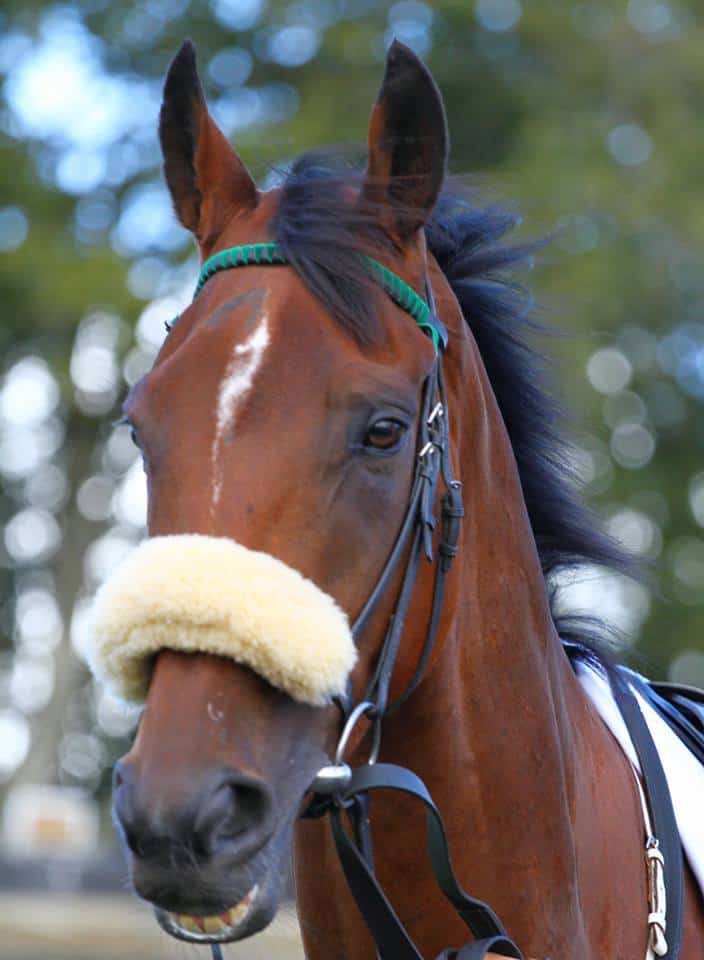
What did he find was the biggest challenge in his transition from Race Horse to Riding Horse?
Standing still! He is not the most patient so having stand quietly to be mounted was too boring for him. One of the issues we had to deal with is that he has kissing spine. To try solve this issue and ensure his comfort and a smooth transtion from a racehorse we spent a lot of time lunging long and low to really strenghten his back. Typical racehorse style he struggled with his canter transtions, one rein super and the other one didn’t seem to even exist.
Are there any particular traits in his character/temperament that make him special?
He loves being the centre of attention!! He can tell if you are talking about him, he will start pounding the door until you come and talk about him in front of him.
One of his special talents is being able to tell if you are even more than a minute late at feed time, pounding the door until his breakfast has been served. One of the best things about him is his presence. He knows he is a big good looking horse and absolutely thrives off people watching him. I think that’s why he loves showing, he rises up to the atmosphere and struts around the ring like a professional!
Did the retraining process take a long time?
Certerach’s retraining process took the best part of a year with a few breaks in between.
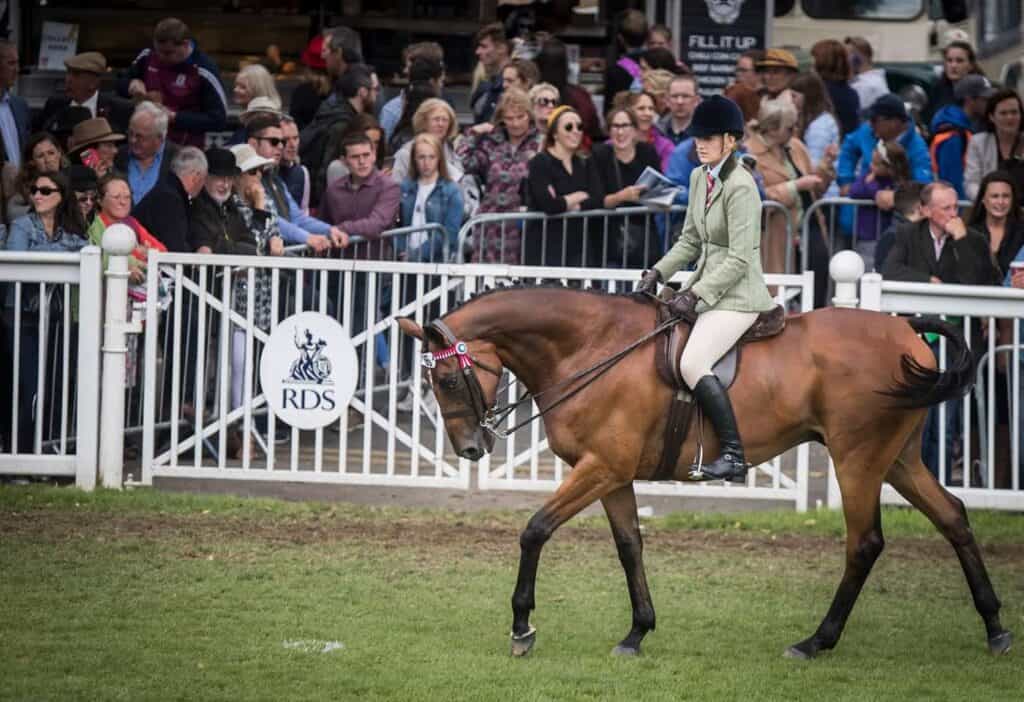
What have been some of the Highlights in his new Career so far?
Our biggest success was at Tattersall’s July Show 2018 where we won our first red rosette in the show ring up against some experienced ex -racers that have been on the circuit much longer than him.
The RDS was a huge deal, we were both RDS newbie’s so didn’t really know what to expect. We didn’t come away with a prize but getting there and for Certerach to behave as well as he did and ride so well it was just surreal!
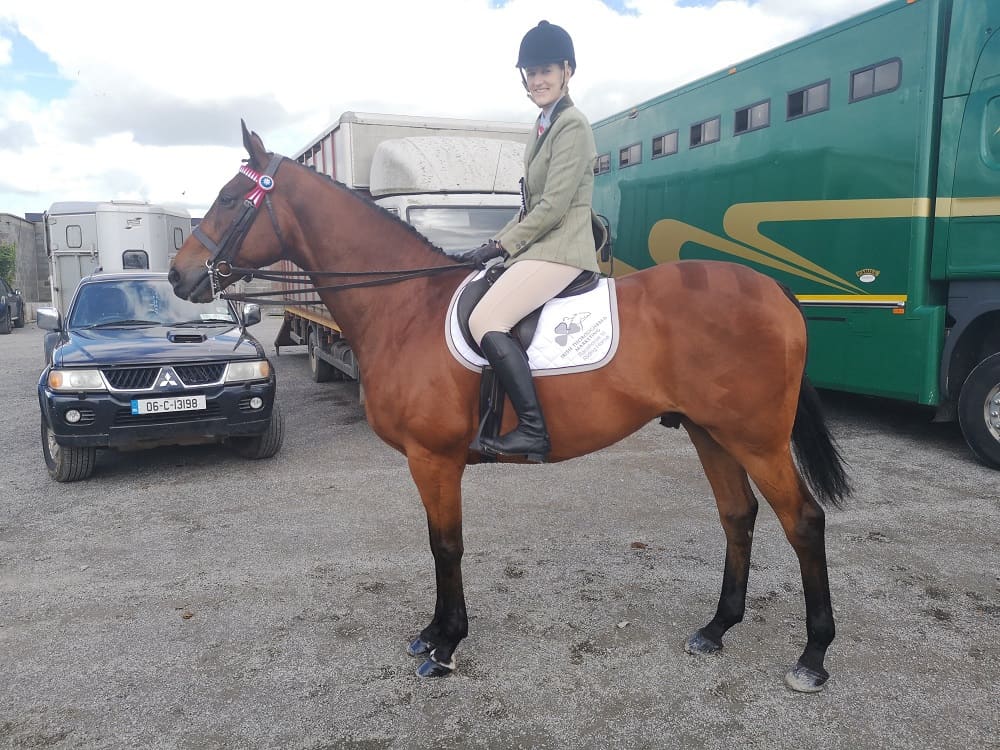
If you had one piece of advice to offer someone considering retraining an ex-racehorse to riding horse, what would that be?
Have patience. Some days will be better than others but just remember it will all come together and be worth it in the end.
Forpadydeplasterer & Joanne Quirke
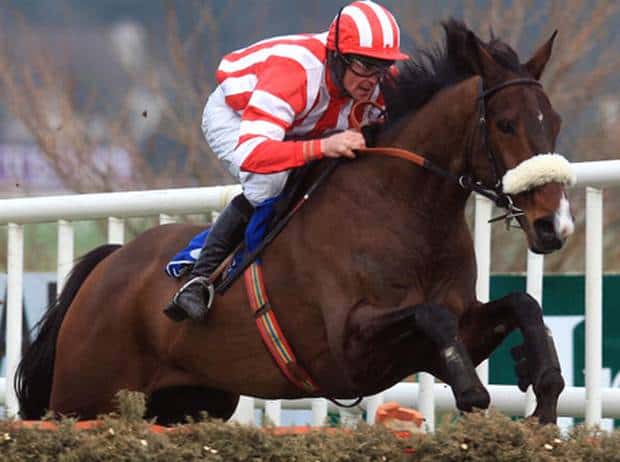
Hi Joanne,
Thank you so much for taking the time to talk to us about your journey from Race Horse to Riding Horse with Forpadydeplasterer. We have just a few questions for you to find out a bit about his racing past and how his transition went.
Tell us a little bit about your horse’s racing career and what were his most notable achievements.
Forpadydeplasterer – In 2008 he won the Deloitte Novice Chase and the following year won the Arkle Challenge Trophy at the Cheltenham Festival 2009.
He also finished second to Big Zeb in the 2010 Queen Mother Champion Chase. He was bred by John Broderick, owned by the Goat Racing Syndicate and trained by Tralee native Tom Cooper; Father of Bryan Cooper. He ran 32 times, finished 1st 6 times, 2nd 14 times and 3rd three times!
How did he come to be with you?
I got a phone call from Tom Cooper one evening out of the blue to say they were going to retire the horse as they felt he had given everything he had to the sport and was time to retire him fit and well at the age of 12.
I had previously campaigned Cooldine that summer, a former Willie Mullins trained horse but unfortunately, he suffered a bout of colic in the Autumn and had to be put down.
The phone call came at the right time as Tom put me through a strict interview as to what I would be doing with him, where he would be going etc. It would have been easier to date his son, I can imagine, than take the horse! I collected ‘Pady’ at Naas racecourse at the start of February and the retraining process began!
What did he find was the biggest challenge in his transition from Race Horse to Riding Horse?
To Pady’s testament his temperament has been one of the key things that makes him so special. I was three months doing walk to trot transitions and we would do daily ‘standing practice’.
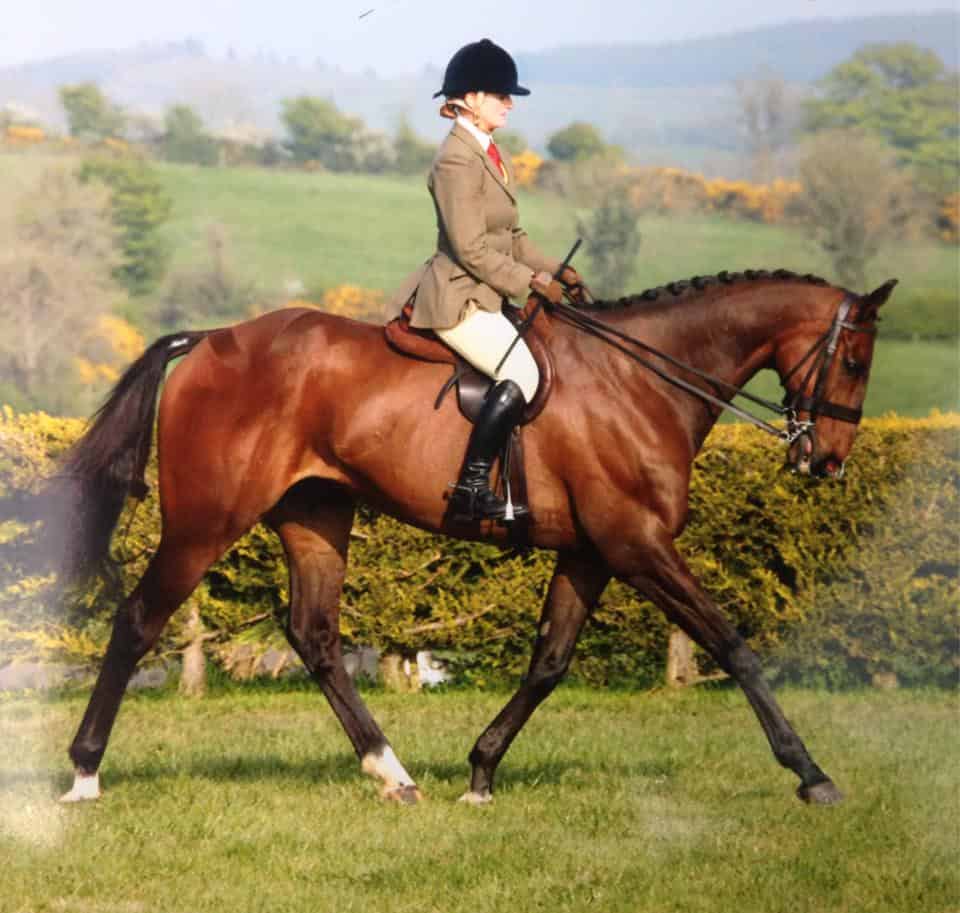
Pady stands at almost 18hh so trying to just get him to work in an outline with a light contact was the bit he struggled with initially; We did plenty of flat work, of which 90% of was done while out hacking. Racehorses are such intelligent animals and will adapt to new routines and training methods very quickly once explained correctly to them.
Are there any particular traits in his character/temperament that make him special?
Pady is one of the biggest gentlemen you will ever meet, he really listens to me and trusts me and as a result we have had some great days out. I am so proud of Pady and how far he has come since he retired. He is a real showman and loves going to the shows, he’s highly insulted when he sees the box drive off without him.
Did the retraining process take a long time?
The first couple of months were slow but it was purely Pady getting to know me and adapt to his new routine, Pady was ‘racing fit’ when he came to me so he had plenty of down time, I got his back done, teeth done, I got a feed company in to change his diet and got a saddle fitter out to fit his new GP saddle to him. I didn’t want to start the retraining process with any niggles.
As I mentioned before thoroughbreds are extremely intelligent and thrive on work and learning and Pady is a prime example of this. Pady is now 17 and he is teaching the ropes to some of the younger generation.
What have been some of the Highlights in his new Career so far?
Without doubt, winning the RDS Racehorse to Riding Horse Class for three years on the trot. He went to Aintree to the ROR Show and won the Hunter class there also. He won the ITBA Racehorse to riding Horse class at Balmoral show this year and to show he is not a one trick pony he has won Side Saddle classes and last year was one of the finalists in the Young Breeders Final at the Ploughing Championships.
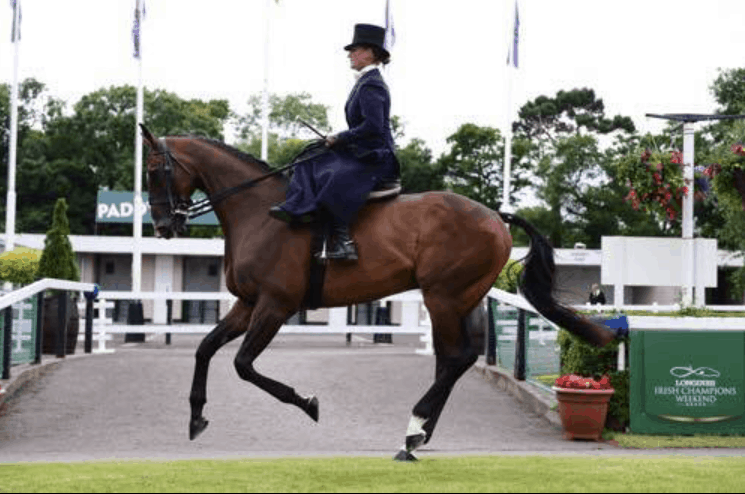
If you had one piece of advice to offer someone considering retraining an ex-racehorse to riding horse, what would that be?
If you are not experienced in thoroughbreds bring someone along with you that is, not all TBs are suitable for retraining.
Temperament is key as is their soundness. Some TB’s may retire sound, others may retire through injury. You need to make sure whatever horse you get will stand up to the level of training you wish to do. Some horses can’t take to the atmosphere and think every time they land at a show they are going to the racecourse. Get plenty of outings to quiet shows, the beach, even a friend’s house just so they eventually realise their racing days are behind them. Keep the retraining simple at the start and don’t get frustrated if they don’t pick it up the first time; they will and will reward you with plenty of great days out thereafter.
